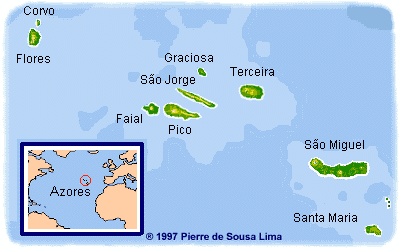|
The crew
|

|

|

|
The crew performed admirably, though each member had his weaker moments - which we shall not dwell upon. Fortunately, the setting makes up for any personal defects by making one look truly manly.
|
|
The ship
|

|

|

|
Apart from some minor defects, the Hutting 45 with its rigid aluminium hull performed brilliantly. She proved very stable in rough seas, and, thanks to its ample deck space and practical lay-out, easy to work on. Sereia also showed great ability to move at speed. Surfing off the waves on a downwind reach on the day before last we hit 11 knots repeatedly, once even 12.4!
|
|
The sea
|

|

|

|
It is hard to faithfully show seastates in photography. The waves, here about 5m high, in the picture always look much smaller than they are in real life. One solution would be to take a longer lens. What also helps is to have a ship passing nearby. During this mid-ocean encounter the freighter sometimes completely dissappeared behind the surging swells.
|
|
The islands
|

|

|

|
The Azores surprised us with their exotic beauty. We had certainly expected something beautiful, but the breathtaking reality at times made us (yes, hard to believe), truly speechless. Peter ten Hoopen revisited the islands twice (once sailing over the other way across the Atlantic, from Bermuda), but as Rod Stewart sings, 'the first cut is the deepest'.
|
|
The memento
|

|
All yachts, nearly without exception, that make landfall on the Azores (with Horta on Faial being the most visited port), leave a painted memento of their journey on the port's walls. Failing to do this might jinx the boat, and which seaman dares to tempt fate? Our painting brought us a fast return voyage of only six nights, immensely beautiful seastates, and lots of happiness at sea.
|
![]()













